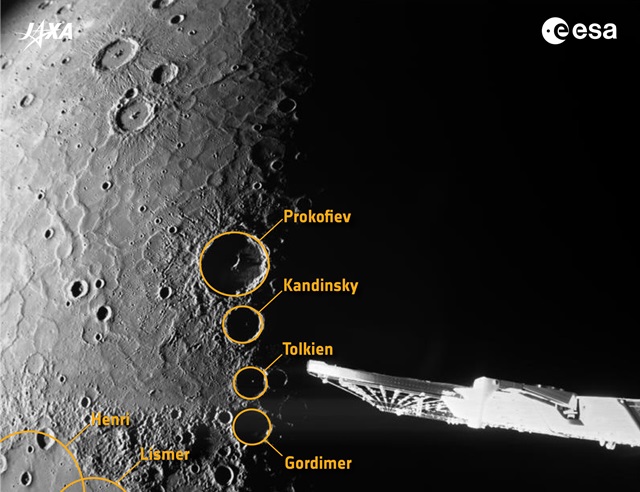The European Space Agency’s BepiColombo‘s sixth and final Mercury flyby, executed on January 8, 2025, successfully set the stage for its planned orbit insertion in late 2026. The ESA/JAXA mission skimmed just a few hundred kilometers above Mercury’s north pole, capturing close-up images revealing potentially icy, permanently shadowed craters and the expansive sunlit northern plains.
At 06:59 CET, BepiColombo flew just 295 km above Mercury’s surface on the planet’s cold, dark night side. Around seven minutes later, it passed directly over the Mercury’s north pole before getting clear views of the planet’s sunlit north.
After flying through Mercury’s shadow, BepiColombo’s monitoring camera 1 (M-CAM 1) got the first close views of Mercury’s surface. Flying over the ‘terminator’ – the boundary between day and night – the spacecraft got a unique opportunity to peer directly down into the forever-shadowed craters at planet’s north pole.
“This is the first time that we performed two flyby campaigns back-to-back. This flyby happens a bit more than a month after the previous one,” says Frank Budnik, BepiColombo Flight Dynamics Manager. “Based on our preliminary assessment, everything proceeded smoothly and flawlessly.”
“BepiColombo’s main mission phase may only start two years from now, but all six of its flybys of Mercury have given us invaluable new information about the little-explored planet. In the next few weeks, the BepiColombo team will work hard to unravel as many of Mercury’s mysteries with the data from this flyby as we can,” concludes Geraint Jones, BepiColombo’s Project Scientist at ESA.
Launched on October 18, 2018, BepiColombo is the second and most complex mission ever to orbit Mercury. Close to the Sun and more difficult for an orbiter to reach than Saturn, this small desert world is the least explored planet of the inner Solar System. Learning more about Mercury will shed light on the history of the entire Solar System.
Packed with scientific instruments, the mission will try to answer many perplexing questions, such as: Why is there ice in the polar craters of the scorched planet? Why does Mercury have a magnetic field? And what are the mysterious ‘hollows’ on its surface?




